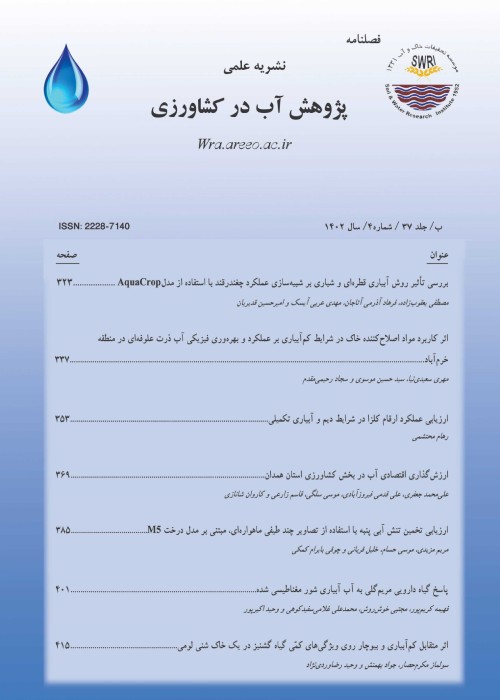Comparison of Five Halophyte Species for Forage Production with Saline Water under Three Irrigation Methods
Due to shortage of fresh water resources and increase in the salinity of soil and water resources, use of halophytes has a great importance for forage production and human food security. To compare the effect of different irrigation methods (furrow, bubbler, and drip) on some halophyte forage species, a research was conducted in Sadooq Salinity Research Farm of NSRC in Yazd, Iran, for three years. The experimental design was arranged in complete randomized block design in the form of split plot with three replications, Main plots were different irrigation methods (furrow, bubbler, drip) and halophyte species (A. canescens, A. halimus, A. lentiformis, A. nummularia, and K. indica) were laid out as sub main plots. All plots were irrigated with saline water of 14 dSm-1. During the growing season, all plants were cut every 3-4 months and yield and yield component as well as water use efficiency were measured. Results indicated that A. canescens, followed by A. halimus, with yield of 7.48 and 3.28 ton/ha dry forage, respectively, had the highest forage yield with significant differences (p< 0.05) with each other and with other treatments. Results showed that, under furrow irrigation method, A. canesence and K. indica had the maximum and minimum water use efficiency, respectively. The same trend was also observed for bubbler and drip irrigation methods, as A. canesence had the maximum of water use efficiency under these methods. Based on the results, the highest water use efficiency (2.26 kg/m3) was observed for A. canesence irrigated with bubbler method, and the lowest (0.07 kg/m3) was for K. indica under drip irrigation method. Consequently, based on the results of this experiment and considering the economical and operational aspects of irrigation methods, A. canesence, with dry yield of 7.73 and 8.81 ton/ha under furrow and bubbler irrigation methods, respectively, could be introduced as the best halophyte species for forage production under saline conditions. The results will be more helpful if the experiment is carried out again with determination of water requirement for each plant based on evapotranspiration or soil moisture fluctuations.
- حق عضویت دریافتی صرف حمایت از نشریات عضو و نگهداری، تکمیل و توسعه مگیران میشود.
- پرداخت حق اشتراک و دانلود مقالات اجازه بازنشر آن در سایر رسانههای چاپی و دیجیتال را به کاربر نمیدهد.



